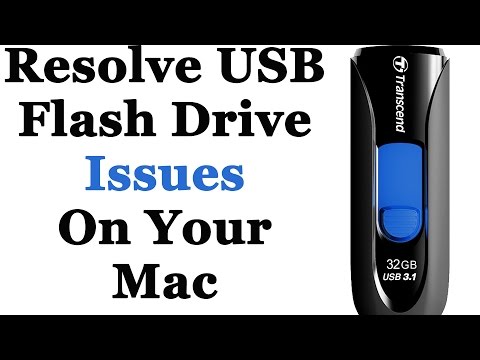Connie Yang is the primary columnist in the computer field at iBoysoft. She is enthusiastic about sharing tech tutorials on data recovery and operating system-related problems resolution. Over the years, Connie has published many computer-related guides and introductory articles.
Solving Mac USB Flash Drive Detection Issues: A Step-by-Step Timestamped
It is important to troubleshoot and try different methods to fix a USB flash drive that is not showing up on a Mac, including checking for detection, trying different USB ports, adjusting preferences, using Disk Utility, running the First Aid tool, and ultimately considering replacing the drive if all else fails.
1. 🔍 Make sure your Mac detects the USB flash drive by checking the system information in the utilities.
2. 💡 If your USB flash drive is not showing up on your Mac, try unplugging it and plugging it into a different USB port.
3. 💡 Try accessing the USB flash drive again and if it doesn't show up, use the easy approaches to troubleshoot.
4. 💡 Make sure to check the "external disks" option in the Finder preferences for both desktop and sidebar to troubleshoot USB flash drive issues on a Mac computer.
5. 💡 If the USB drive doesn't show up, try using Disk Utility in the Applications folder.
6. 💡 Click on the drive, run First Aid to repair any errors, unmount the disk, wait 10-15 seconds, then plug it back in to access it again.
If your USB drive is still unmounted in Disk Utility and can't be fixed by the utilities, you can try to reformat it to make it mountable and show up on your Mac again. The sad thing is that reformatting the USB will erase all contents on it.
If you don't want to permanently lose your irreplaceable files on the unmounted USB drive, you can use iBoysoft Data Recovery for Mac to quickly rescue files from it.
Here's how:
- Download, install, and open iBoysoft Data Recovery for Mac on your Mac device.
- Choose your unmountable USB drive on the main interface of the tool, then click Search for Lost Data.
- Wait for the scanning process to end and browse the results.
- Preview and select your desired files, then click Recover to save them to another drive or on your Mac.
7. 💡 If your USB flash drive is not detected on your Mac, try it on another system and if it still fails, consider replacing it.
Solving Mac USB Flash Drive Detection Issues: A Step-by-Step Summary
🖥️ It's important to check if the drive is at least being detected by the Mac before troubleshooting any further issues with USB flash drives.
💻 If your USB flash drive is not showing up on your Mac, try unplugging it and then plugging it into an alternate USB port.
🔍 Whichever USB port you're using, make sure to try accessing it again to see if it shows up on the list.
🔌 Make sure to have external disks checked under "show these items on the desktop" and "devices" in the sidebar preferences.
🔄 Going to Disk Utility can help in some situations when the drive still does not show up.
💻 Running the First Aid tool can automatically repair any errors on the drive, potentially solving the issue of not being able to access the contents of the drive.
💾 If it still fails after trying on multiple systems, it's time to consider replacing the drive and hopefully you have backups of your data.
Your USB flash drive may be not connected to your Mac well. You can check the USB port and USB cable, and disconnect the accessories if your Mac or USB hub is connected with multiple peripherals. Besides, the corrupted USB drive and system bugs can also lead to your flash drive not being recognized on Mac.
Usually, once your USB is detected and mounted by macOS, it will show up on the desktop or on the Finder sidebar under the Locations section. If you can't find them there, check your Finder preferences. Open Finder and click Finder on the top menu bar > Preferences, select General and check External disks to allow them show on the desktop, next select Sidebar, check the box next to External disks in the Locations section. If the USB drive still won't show up in Finder and on the desktop, go to Disk Utility to check if it is mounted.


